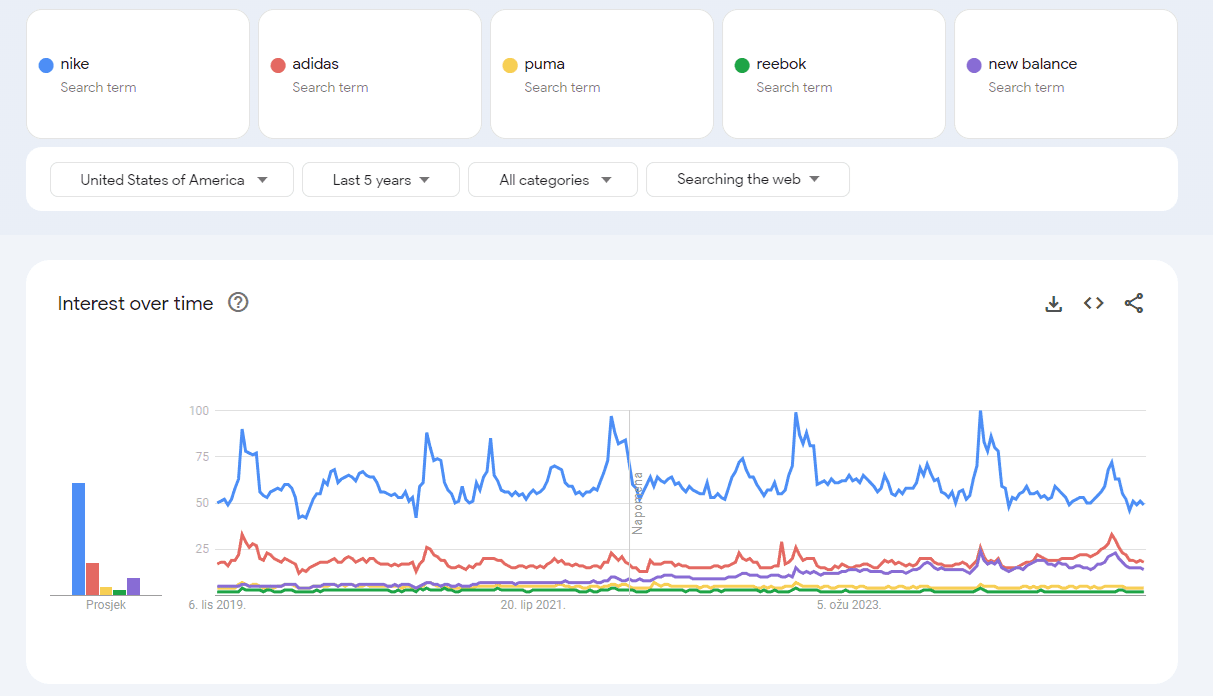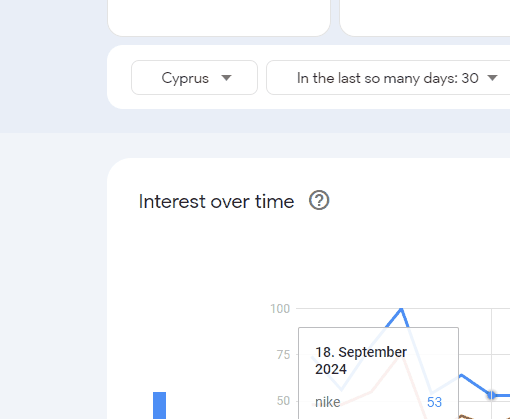Google Trends is a powerful tool that allows you to track market trends and adjust your marketing strategies based on search data.
Here are couple of tips on how you can use Google Trends to effectively monitor market trends:
1. Keyword research:
When creating a new strategy or starting a new digital marketing job in an unfamiliar industry, the first step is to conduct thorough keyword and topic research along with checking out what your competitors are doing. This process will provide you with valuable insights, helping you plan your next steps effectively.
Identifying Popular Terms: Enter keywords relevant to your industry to see how popular they are over time. This can help you identify new topics that are becoming increasingly sought after.
Related Searches: Google Trends shows related searches that are currently trending, which can be useful for finding new content or campaign ideas.
2. Seasonal Trend Analysis
In winter, we wear coats and jackets, while in summer, we reach for swimsuits. Have you ever considered the concept of seasonality in your industry? Seasonality refers to the regular changes in demand or behavior that occur at specific times of the year.
For example, some products or services sell better during specific seasons or holidays. Businesses use this understanding to plan their inventory and marketing strategies to match consumer needs throughout the year. Google Trends can help you follow those needs, here is how to do it:
Adjusting the Time Frame: Set the analysis time range to identify seasonal fluctuations in interest for specific terms. For example, you can track how interest in products changes throughout different seasons or holidays.
Monitoring Specific Events: Use Google Trends to analyze how specific events affect consumer interest. This approach can help in planning marketing campaigns aligned with current events.
Monitoring seasonality can help you prepare your promotions and order stocks in advance.
In comparison, the search trend for the query "laptop" is less influenced by seasonality compared to jackets or swimsuits. Laptops maintain a steady level of search interest throughout the year, with slight peaks around events like Black Friday, Cyber Monday, and Christmas. There is also another peak around the end of August, with school and college classes starting, along with end-of-summer sales.
3. Competitor Comparison
Keep your friends close and your competitors closer, right? There is a good chance that your competitors are jumping on recent trends, and finding out what they are doing right can be a valuable starting point when writing your own strategy. Another important point is finding out what they are NOT doing so we can fill that gap if there is interest from customers or users.
Consider conducting a SWOT analysis (Strengths, Weaknesses, Opportunities, Threats) to systematically evaluate your competitors' positions. This can help you uncover areas where you can improve or innovate, enabling you to stay one step ahead.
Analyzing Competitive Terms: Compare your keywords with those used by your competitors. Google Trends allows for direct comparison of up to five terms, which can help you identify where you stand in relation to the competition.
Identifying Market Opportunities: By tracking how interest in specific terms changes over time, you can uncover new market opportunities or identify when your competitors are gaining popularity.
Let’s imagine we are a software company looking to offer a complementary product in the remote workspace. By analyzing search trends for remote work tools like Zoom, Microsoft Teams, and Slack, we can gain valuable insights into the changing needs of businesses and remote teams.
In this example, we can notice that interest in Zoom is surging due to its video conferencing capabilities. Because of this, we can identify an opportunity to create software that integrates with Zoom to enhance virtual meeting experiences. For example, we can develop a plugin for advanced meeting analytics or a virtual collaboration whiteboard.
4. Data Localization
Filtering by Location: Set search results by specific geographic areas to obtain more relevant data for your target audience. This can help you to understand local trends and consumer preferences.
5. Content Optimization
We know that content is the king. By doing careful research we can create the content that matters to our audience.
Content Planning: Based on data from Google Trends, you can create content that aligns with current consumer interests, increasing your chances for engagement and conversion.
SEO Strategy: Utilizing information from Google Trends can enhance your SEO strategy by helping you select the right keywords that are currently popular.
Conclusion
Google Trends is a powerful tool for gaining insights into consumer behavior, understanding market shifts, and optimizing your content strategy. Whether you're looking to stay ahead of the competition, identify emerging trends, or fine-tune your SEO efforts, Google Trends offers the data you need to make informed decisions.







